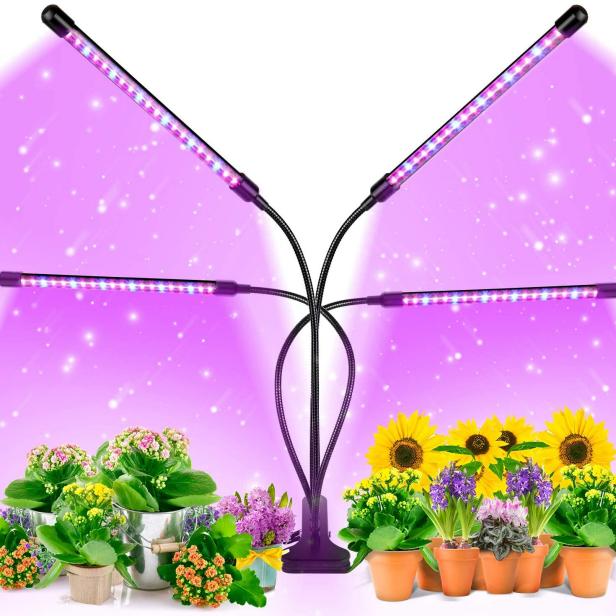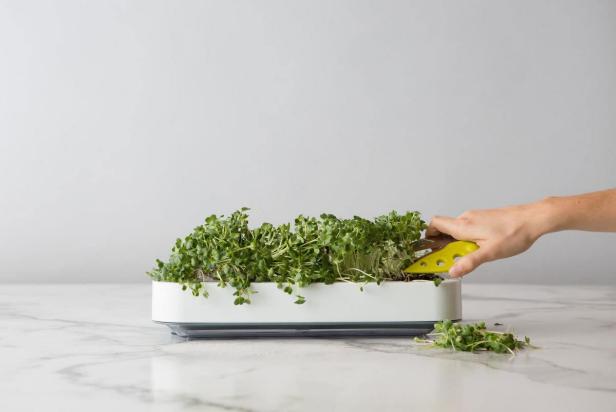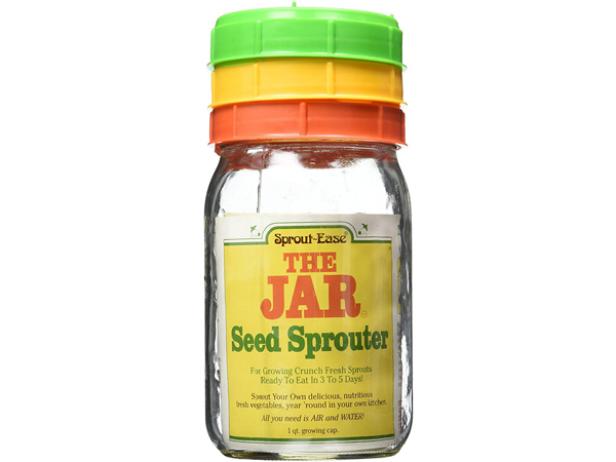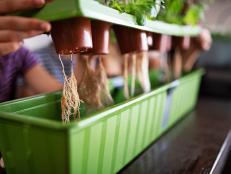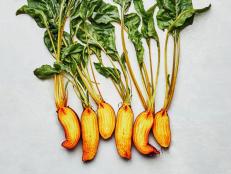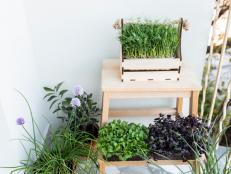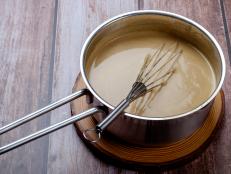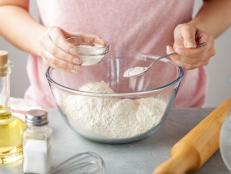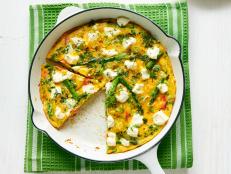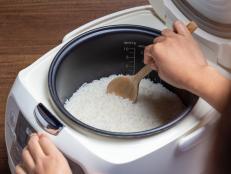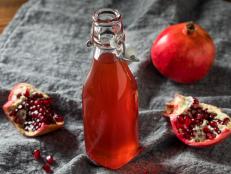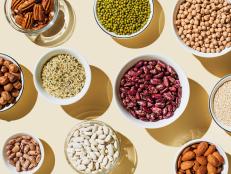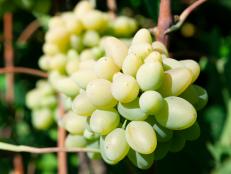The Easiest Herbs and Vegetables to Grow Indoors
Plus, simple growing methods, tricks and gadgets to get a good bounty.
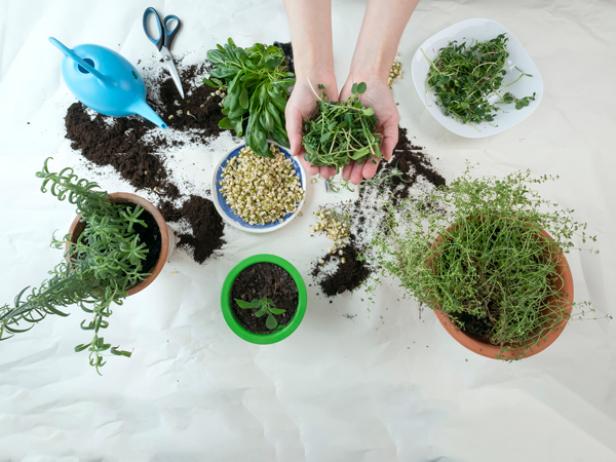
undefined undefined/Getty
Some foods are so easy (and budget-friendly) to grow indoors that you should be doing it year-round. The next time you’ve got microgreens, sprouts, herbs or select vegetables on your list, skip the grocery store and get growing.
Indoor Food Gardening 101
Before we dive into specific plants, let’s talk about the challenges of growing indoors and some ideas and methods for overcoming them.
Pollination: Outdoors, most food crops are pollinated either by wind (corn, wheat and other grains) or insects (pretty much everything else). Indoors, these pollinators are absent, so you may need to assist with pollination yourself if you’re growing anything eaten for its fruit or seed, such as peppers or tomatoes. That’s why most of the foods that are simplest to grow indoors are grown for their greens, because pollination isn’t needed for a plant to produce leaves.
Light: Most vegetables and herbs need full sun whether grown outdoors or indoors, which means six or more hours of sunlight daily. In some spaces, that much sun can be hard to find outdoors, and even harder indoors. If you’re trying to grow indoors, find the sunniest spot possible, or supplement and simulate sunlight with grow lights. Some indoor growing kits provide the light for you, making them a great option for anyone with limited natural light inside their home.
Plant Selection: For the reasons mentioned, not all plants will grow indoors. Many fruiting plants that require a lot of space — squash, okra, melons, beans — are a no-go, but some are possible — tomatoes, peppers, strawberries — if you choose the right varieties. I’ve had luck growing tiny varieties such as ‘Tiny Tim’ tomato and ‘Matchbox’ hot pepper. Otherwise, the best plants to grow indoors are those grown for their leaves, including most herbs, green onions, lettuce, spinach, arugula and other greens. You can also try growing root crops like carrots, beets and radishes, but again, look for smaller varieties for best results; Chantenay carrot varieties are short and thick, making them a better option for growing in pots.
Methods: Containers are the obvious choice for growing indoors. For regular pots filled with potting mix, minimum depth of the container should be six inches, though that will only work for shallow-rooted lettuce and greens; anything else will need a deeper pot – the deeper the better. As it doesn’t rain indoors, you’ll need to water often, so be sure to include a drip tray or use a self-watering container. Better yet, to help control water, choose a hydroponic kit. Some simple kits rely on a wicking method to water plants, but more high-tech kits that include a pump to recirculate water and fertilizer are worth the expense. The ideal option will include a water pump and a grow light, solving most of your indoor gardening challenges. If you’re growing sprouts, use a sprouting jar with a perforated top. Microgreens, on the other hand, can be grown in seed-starting trays or really any kind of sturdy tray, including upcycled plastic takeout packages.
Expectations: Yes, you can grow food indoors, and some plants do quite well. But it’s best to temper your expectations for flavor, color and abundance. Your harvest simply may not be as large, flavorful or intensely colorful as the same foods grown outdoors due to the alterations in light source (natural sunlight versus artificial light); water source (tap water versus rainfall); and growing medium (water or container mix versus natural soil full of earthworms and compost). But, it’s certainly better than not growing at all, in part because growing produce comes with mental and emotional benefits beyond the food itself.
What Foods to Grow Indoors
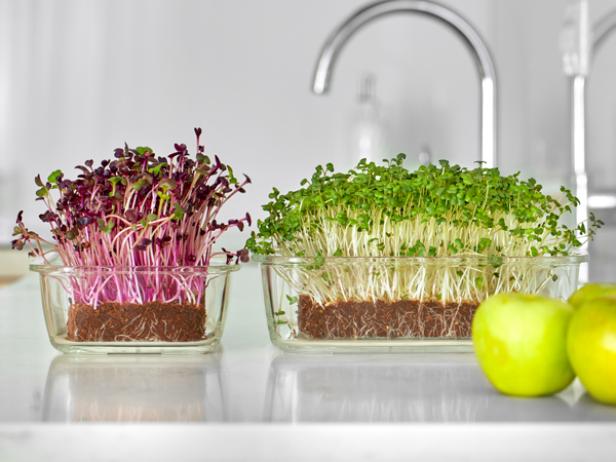
Viktoriia Hnatiuk/Getty
Lettuce
Lettuce is one of the few vegetables that will grow with less than six hours of sunlight daily (though not much less), and it’s easy to grow from seed, making it great for trying inside. Start seeds in a container filled with six inches or more of potting mix, placed in a sunny windowsill. Lettuce grows great in a trough or window-box style planter. It also grows very well in a hydroponic setup.
Greens
Like lettuce, most greens can take a little less light than most veggies. Try arugula, mustard greens, kale, chicory and spinach indoors in containers filled with six or more inches of potting soil, or you can grow them using a hydroponic kit. These plants are also easy to start from seed, which saves money as opposed to growing from pricey seedling transplants.
Herbs
Basil, cilantro, chives, parsley, dill, oregano, thyme, mint, rosemary, lavender and sage will all grow indoors in a sunny spot. Some of these herbs — rosemary, mint, lavender, sage, oregano and thyme — are perennials (meaning they come back year after year) that can tolerate cool temperatures (like, say, from a window in winter). Others, including basil, dill, chives and cilantro, are either annuals or biennials; basil and dill need warm temps, so be sure they don’t get too cold from window drafts, but cilantro and chives can tolerate a little chill. Grow herbs in pots with potting soil or hydroponically.
Root Crops
Carrots, radishes and beets can be grown indoors in containers filled with soil. Because they grow under the soil, a hydroponic setup won’t work for these veggies. Don’t overfertilize root crops, as you’ll get lush greens but spindly roots. Look for shorter varieties that don’t need deep soil to grow in, especially with carrots (try those shorter, rounder Chantenay varieties).
Microgreens
As the name suggests, microgreens are just baby greens, the tiny leafy, nutrient-rich seedlings before the plants grow to full size. So many plants can be grown for their microgreens: peas, radishes, beets, leeks, chives, carrots, lettuce, broccoli, cauliflower, sunflowers and basil among them. Start from seed and sow tightly in a tray specially made for microgreens, filled with a shallow layer of seed-starting mix, or in seed-starting flats or upcycled plastic trays outfitted with drip holes and a drip tray for catching water.
Sprouts
Sprouts are so easy to grow indoors since they don’t require sunlight or soil. As with microgreens, so many plants can be grown for sprouts, including those mentioned above plus beans, chickpeas and lentils. Sprouts are typically grown in jars with perforated tops. The seeds are soaked in water and then drained at an angle over and over until the sprouts form and fill the jar, which, depending on the plant, can happen in less than a week.
Green Onions
Scallions, also called green onions, can be grown indoors from seed in containers, but it’s far easier to regrow them from the root ends of scallions you bought at the grocery store. Save those root ends and place them in a glass or jar with a little water that covers the root but doesn’t cover the top. Place in a sunny spot. The green part of the green onion will begin to regrow from the top. When you get a few inches of new growth, you can cut it back and use the new greens. You can get a few rounds of new growth before it’s time to toss out the original root.
Hot Peppers
While fruiting plants isn’t ideal for growing indoors, hot peppers are worth a try, particularly if you use a smaller plant variety. Look for varieties labeled compact or dwarf. Why hot peppers and not sweet? Hot peppers are generally easier and grow faster than sweet peppers. Unless you have a particularly sunny spot indoors, your peppers will benefit from a grow light or from being grown in a hydroponic setup that includes grow lights. When your hot peppers are blooming, give them a gentle shake now and again to simulate the action of wind or of bees landing on the plants — this will help ensure that pollination occurs and that those flowers will turn into beautiful peppers. The same method will work for compact tomato varieties, so if you have luck with hot peppers, give tiny tomatoes a try.
Related Content:
























